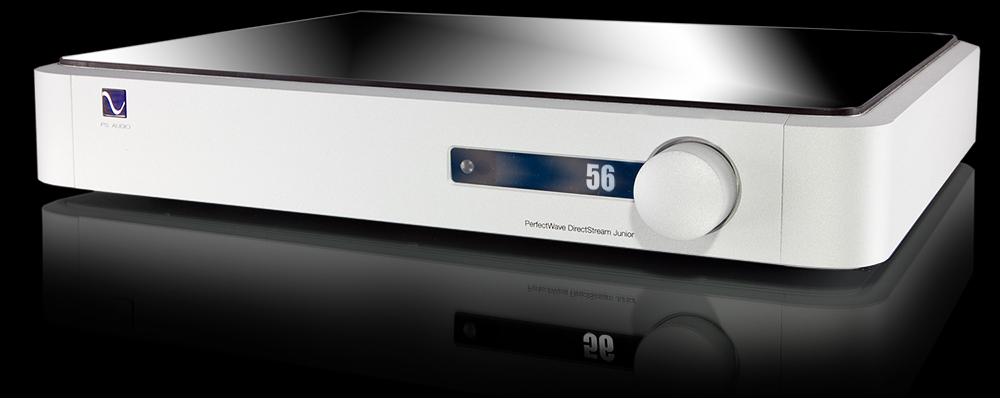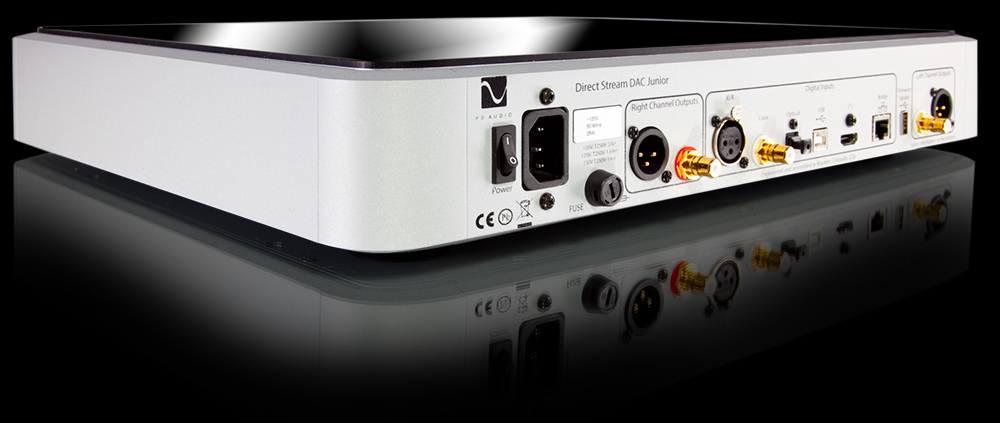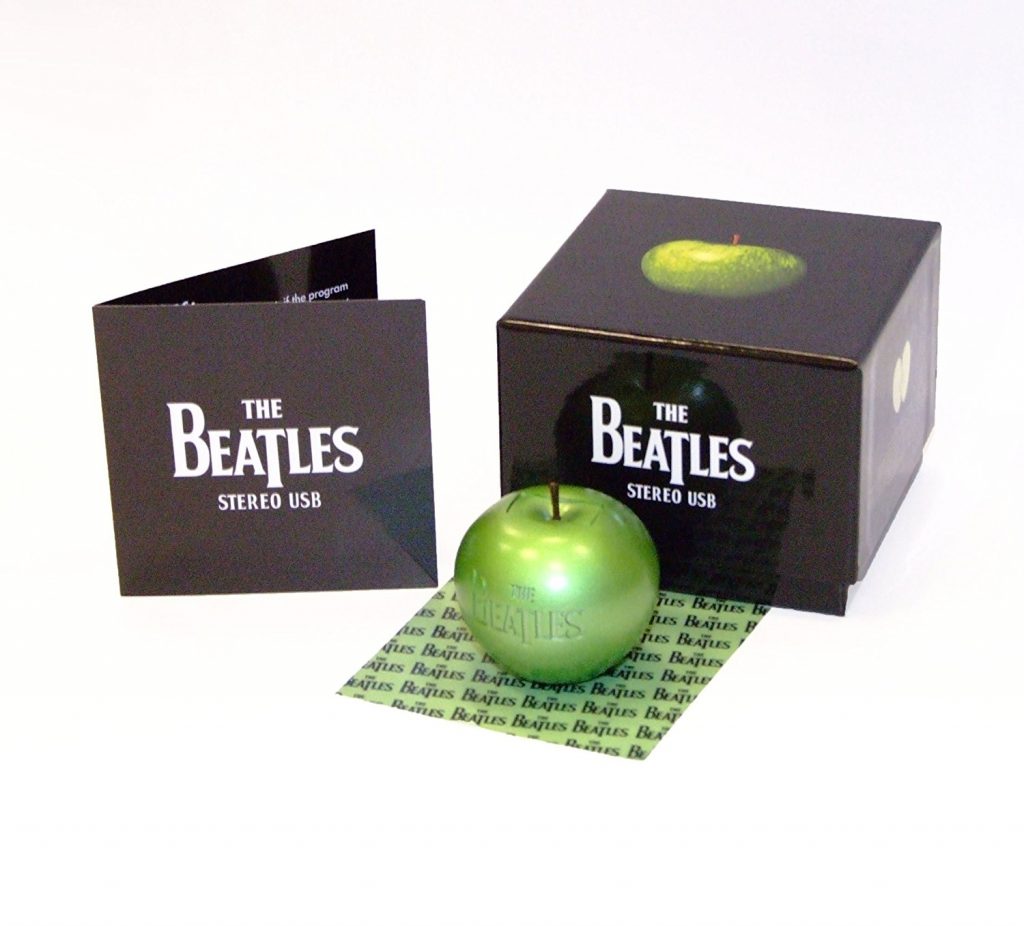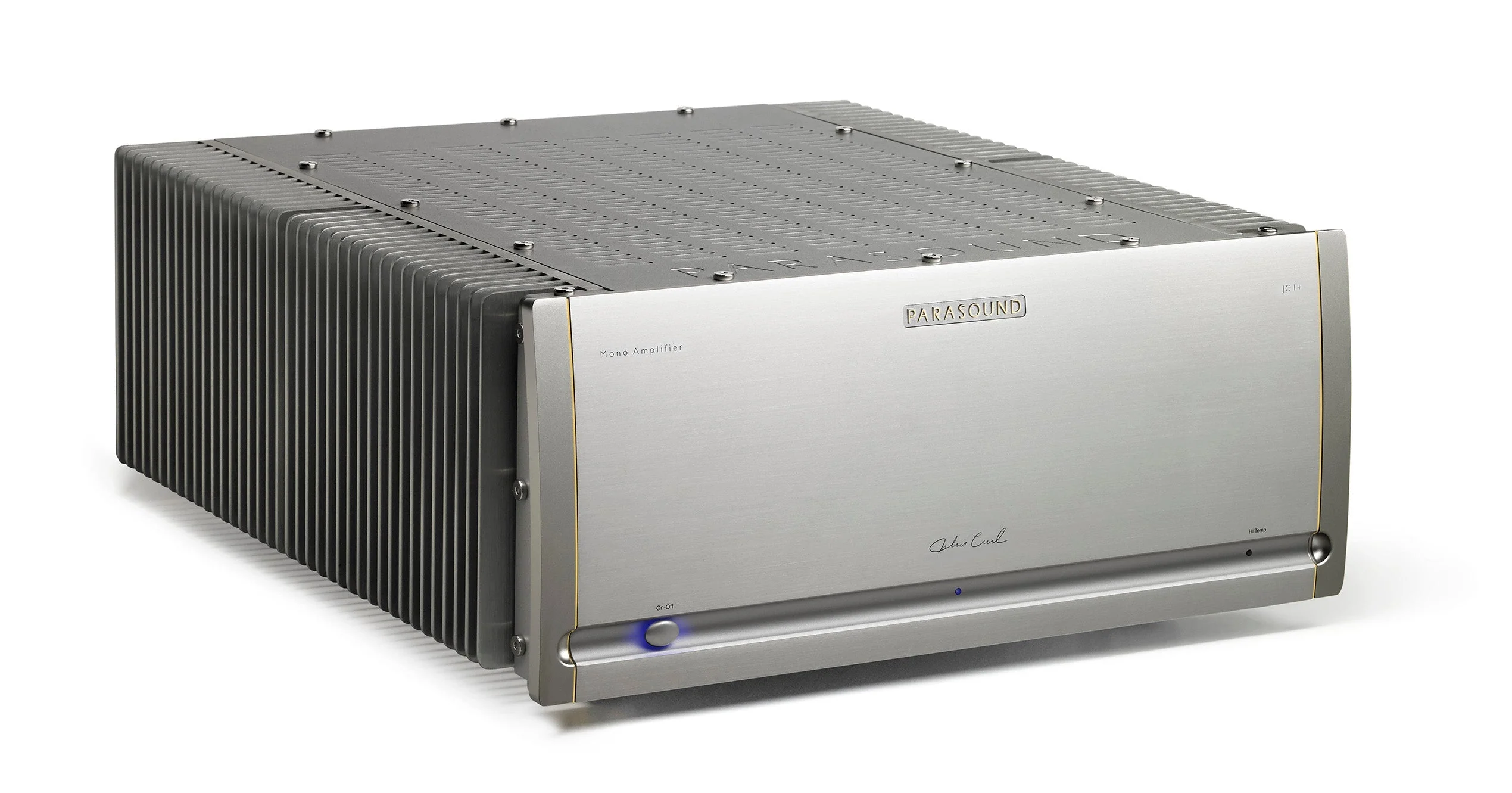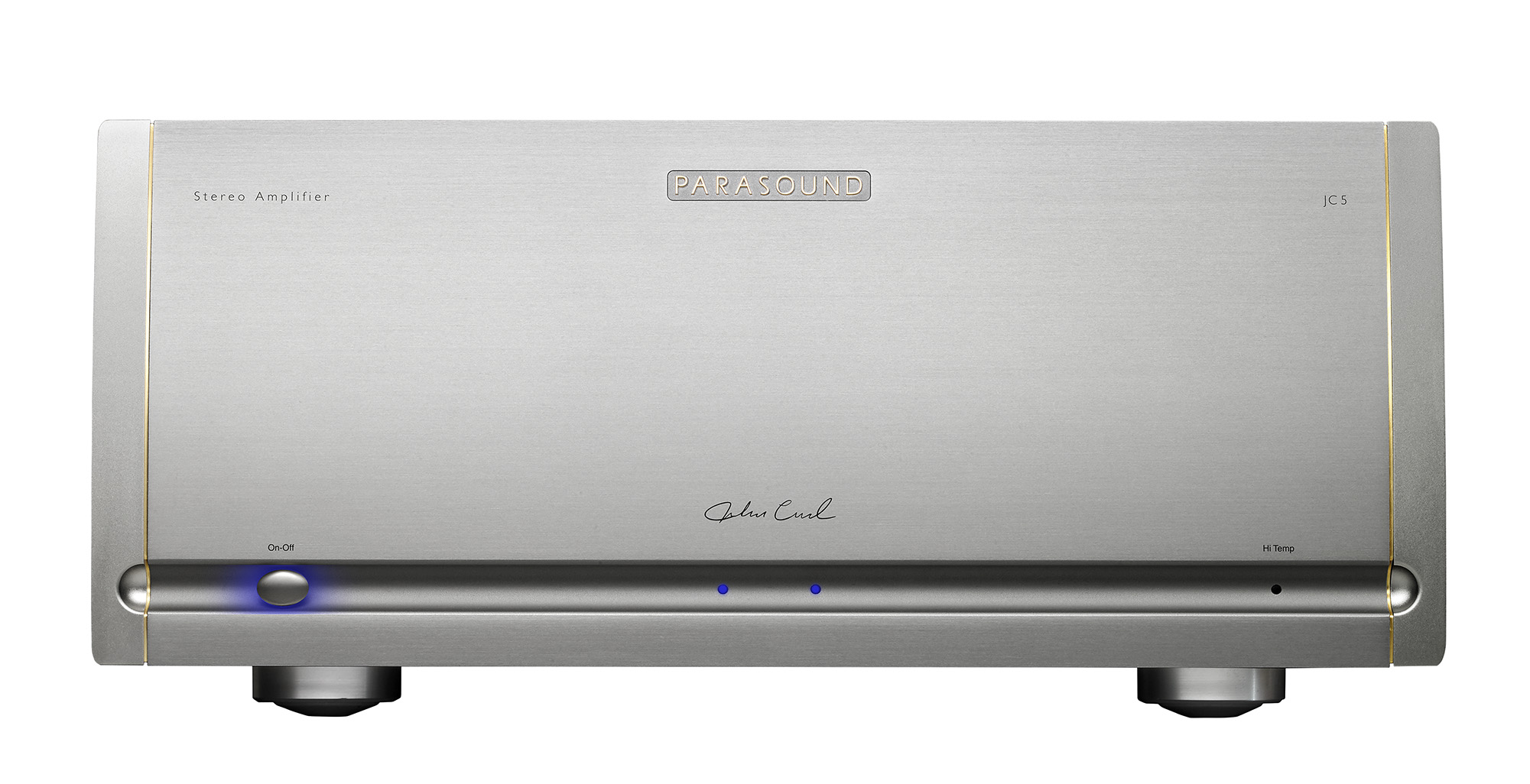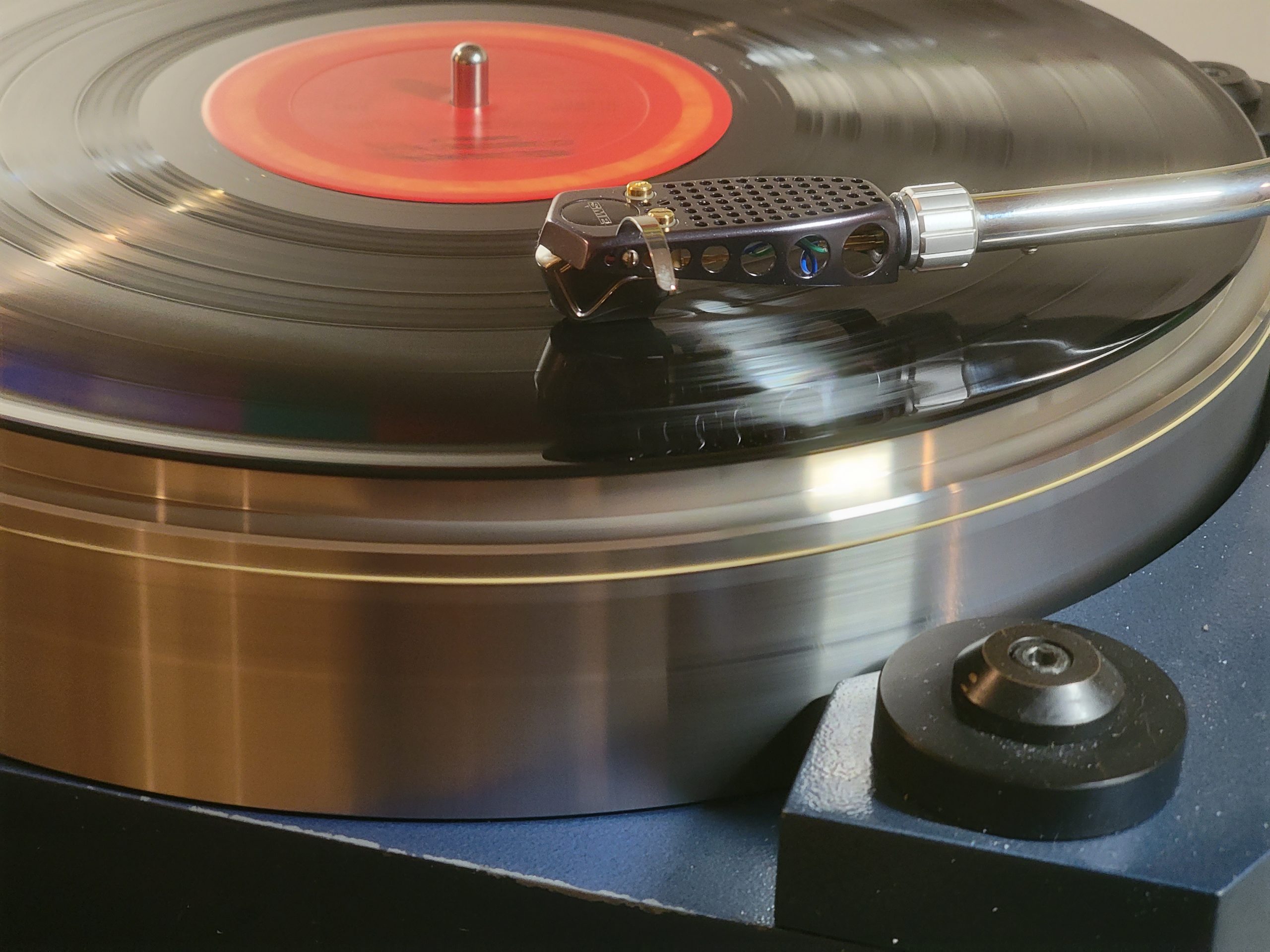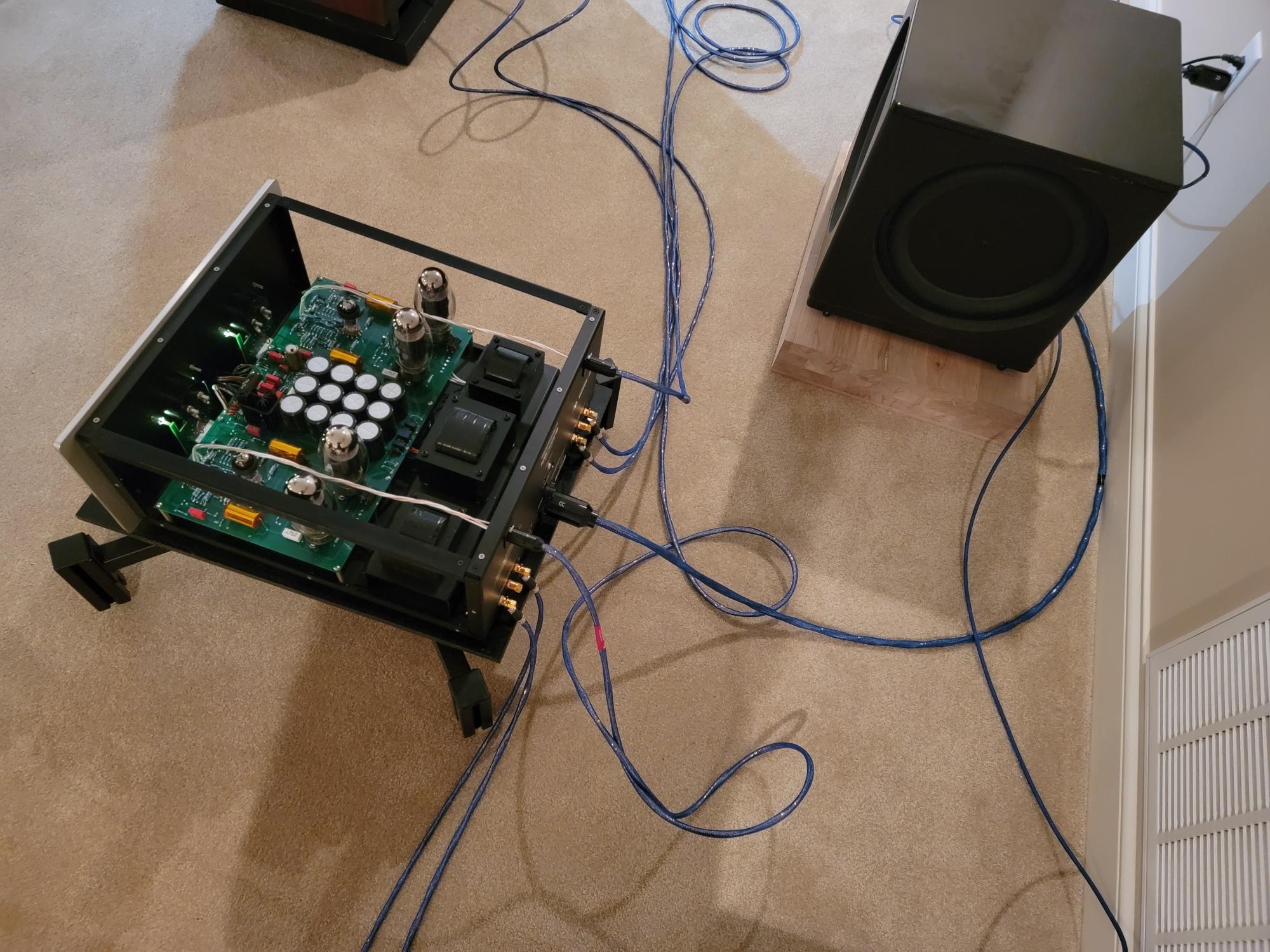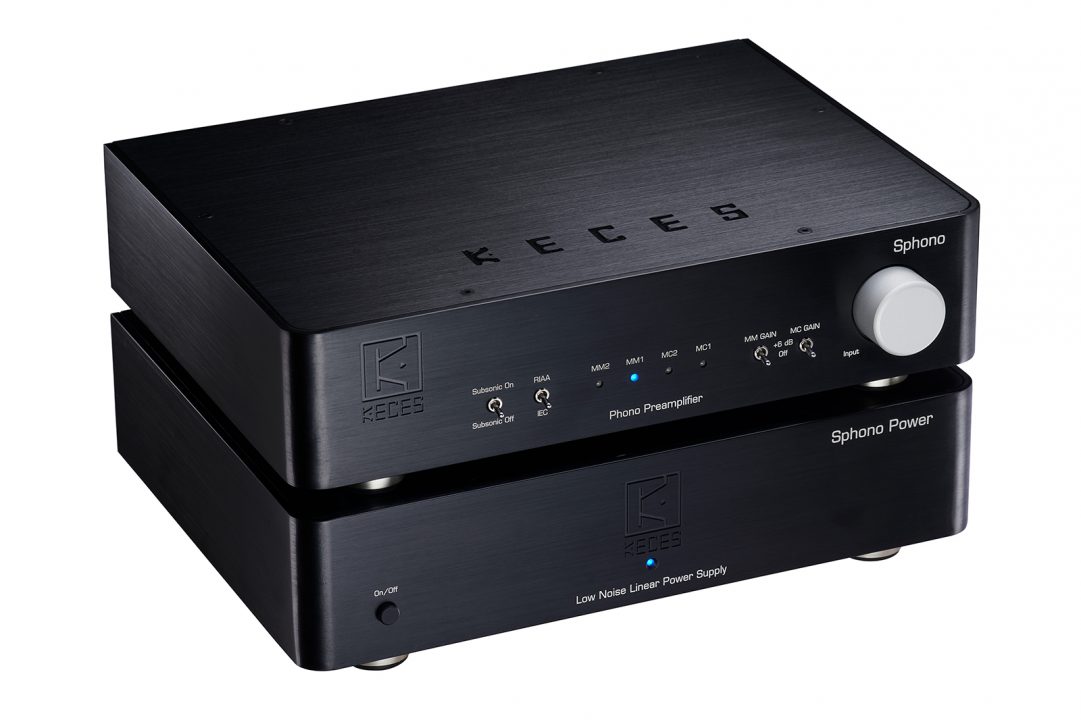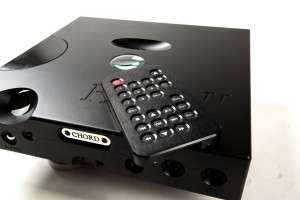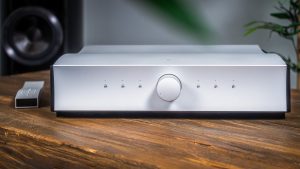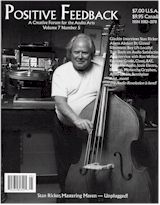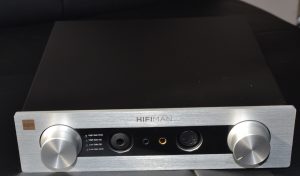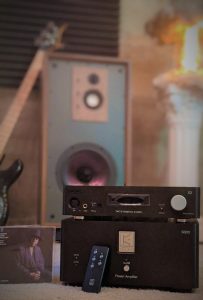The PS Audio DirectStream Junior DAC is another member of the class of audio components that exudes pride of ownership from the time it lands on your doorstep. No flimsy cardboard boxes here folks. The DSJ comes double boxed with the outer box in plain cardboard to fool nosy audiophile neighbors with a predilection for sticky fingers and the inner box is white with all of the PS Audio logos.
Once you open both boxes, you have a well-detailed owner's manual with a pair of white gloves you are supposed to wear while you are handling and installing the DSJ into your rack to keep your grubby fingers from tarnishing the beautiful finish. And man, I love the curved style that all of the current components in the PS Audio lineup are sporting. I know that beauty is in the eye of the beholder, but I find the DSJ to be striking in appearance.
Setup of the DSJ in my system was very straightforward. I have a dedicated rack for my digital gear and I placed the DSJ on the middle shelf. My music server is a specially purposed laptop running JRiver 20 which I connected to the DSJ via USB. I had to download and install a windows driver to the laptop so that JRiver would recognize the DSJ which went flawlessly (and this can never be taken for granted when installing a new DAC). I next connected the DSJ via XLR cables to my ARC Ref 6 and I was off to the races in no time.
The DSJ sports 6 digital inputs, it upsamples all inputs to DSD 10x, it has a built in Bridge II Network streaming input for those who love to stream their music, and it has both volume and balance controls. I'm just scratching the surface here with regards to all of the capabilities of the DSJ and I highly recommend visiting the PS Audio website and exploring all of the detailed specifications and features. Oh, and the DSJ comes with a full-size remote control which has a feature set that allows it to not only operate the DSJ, but it will operate other PS Audio components as well like the DirectStream Memory Player and the PerfectWave Transport.
I defeated the volume control using the intuitive menu screen and relied on my ARC Ref 6 to provide the volume control function as I do for all of my sources. The rest of my reference system used for the DSJ review consists of my ARC Ref 75 power amp, NOLA KO speakers, and a pair of Definitive Technology Ref subs.
I really like the display built into the DSJ. It's easy to read and it's easy to navigate. Another feature I like about the display is that even though both PCM and DSD are converted/upsampled to 10x DSD, the display always shows you exactly what the input source file really is. Out of all the different file types I played (16/44.1, 24/44.1, 24/48, 24/96, 24/192, DSD 64, and DSD 128), the DSJ always correctly identified each file. With regards to DSD files, the DSJ only accepts DSD 64 and DSD 128 before it upsamples them to 10x DSD.
Another cool feature is that because the DSJ uses Field Programmable Gate Array (FPGA) chips, PS Audio can offer updates to the software when something new and better comes along which we know in the digital audio world something new and better is always coming along. I always say that the life of digital components in the marketplace is measured in dog years due to the speed of changes in digital technology. Having the ability to perform future upgrades protects your investment and will bring you improvements in performance when advancements in the software are available.
I have been on record for years as saying that I much prefer the sound of DSD to PCM so I was excited to get a chance to hear and review the DSJ. The comments that I have written before about why I prefer DSD to PCM is that it simply sounds more like analog. Even though I have a fairly large collection of both CDs and digital PCM files of all stripes, I find myself rarely listening to PCM. If you listen to the well-heeled cognoscenti, they will tell you that if you want the "best" sound from PCM, you need a dedicated PCM DAC that sells for a minimum of $50k. The good news is that if you never really cared for the sound of PCM and you don't have an extra $50k lying around to dump on a DAC that will be obsolete before you forget how much you spent on it, you can buy the DSJ and enjoy how good DSD sounds plus you will make your PCM files sound better to boot (assuming you don't already own one of those $50k+ DACS).
One of my big disappointments with regards to PCM purchases (and there have been many disappointments) was when I bought the Beatles limited edition Green Apple which contained a USB stick with all of the remastered Beatles LPs using the FLAC format. The limited edition Green Apple came out in 2009 and it was supposed to be limited to 30,000 copies worldwide. This was the first time all of the Beatles' albums were released using 24-bit files instead of 16-bit files.
Alas, none of the DACs I used to own or the one that I currently own (Mytek Stereo 192 mastering version) ever made me want to listen to the 24-bit Beatles' files. They still sounded like PCM always sounds to me which is not a good thing. I have found that compared to analog, PCM sounds bright, thinner, flatter, and less musically engaging which is why I much prefer the sound of DSD. And I don't want to get off on a digital vs. analog tangent here, but I just want to give a background on where I'm coming from with regards to my comments listening to PCM through the DSJ.
Back to the Beatles' Green Apple…Playing the 24/44.1 files over the DSJ which again converts PCM to 10x DSD was a revelation. For the first time since I purchased the Green Apple in 2009, I actually enjoyed listening to the albums. The conversion from PCM to DSD via the DSJ made the sound much better in my opinion and actually something I could listen to vice gnashing my teeth. And since 24/44.1 is not a common bit rate and sample depth, I just had to check the display on the DSJ to see if it captured it correctly and it passed the test. Again, the DSJ always displayed the source file correctly.
One of the comparisons I made with the DSJ was the 24/192 version of Cat Stevens Tea for the Tillerman against the DSD 64 version. Specifically, I played the cut "Where Do the Children Play." This was interesting on several levels because this is not a straight up PCM vs. DSD comparison because the PCM is being converted to DSD 10x. However, it does tell you the differences between hearing a high-resolution 24/192 PCM file against a native DSD 64 file after both have been upsampled to DSD 10x. Via the DSD 64 file, Cat Steven's voice had that smooth purr until he shifts registers from quiet and gentle to loud and dynamic. Also, the acoustic guitar that opens the song has more of the sound of the low E string over the DSD 64 which gives more fullness to the sound of the notes being played compared to the 24/192 version. The low E string is tuned to 82.4 Hz and somehow the 24/192 version gives the effect of being tuned higher because it doesn't capture the fullness of the notes. The 24/192 version also sounded softer and flatter. The acoustic guitar doesn't sound as real as the DSD 64 version nor does Cat Steven's voice which sounds more like a recording of his voice instead of being in the presence of his voice which the DSD 64 file brings you closer to. The bottom line is that I preferred the DSD 64 version over the 24/192 file.
Playing DSD native files is where the DSJ really shines. I played a bunch of native DSD files over the DSJ and I have to say that my Mytek Stereo 192 is showing its gray hair and it can't keep up sonically or feature set wise with the DSJ. The DSJ throws a bigger soundstage than my reference Stereo 192 and all instruments and voices both male and female sound more real, palpable, and are placed in space with more dimensionality.
I played the DSD 128 version of the Opus 3 DSD Showcase 2 to hear how the cut "Needed Time" by Eric Bibb sounded. This is a beautiful song and is my favorite cut on this Opus 3 recording. Played back over the DSJ, the recording sounded very natural with all of the acoustic instruments and Eric's voice was simply beautiful to hear. This is the best rendering of this cut that I have ever heard. I jotted down in my notes that this recording could fool some analog lovers into thinking they were hearing an analog recording.
I think that PS Audio hit a homerun with the DSJ. It's beautiful to look at, it's simple to use, it has all of the digital inputs a reasonable person could hope for, and it helps protect your investment by being software upgradable. I'm a fan of FPGA chips because of their functionality and how they sound. For those of you (like me) who have never enjoyed your CD collection much or your hi-rez digital files, the DSJ just might put a smile on your face like it did mine. I found that PCM recordings that I just wouldn't play before I could now play and enjoy through the DSJ. For me, that aspect is the icing on the cake, because being a DSD fan, I love how the DSJ sounds with native DSD files. If you get a chance to hear the DSJ and see and hear what it brings to the table, I think you may just be smitten too.
DirectStream Junior DAC
Retail: USD $3999
PS Audio
720-406-8946




